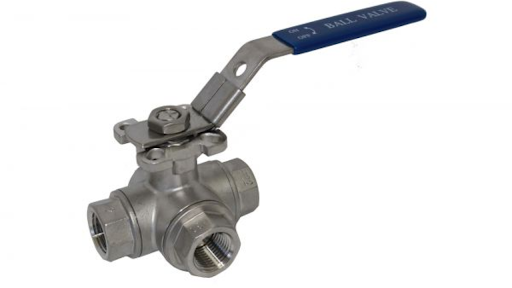Three-way ball valves are versatile and highly efficient components used in various industrial applications to control fluid flow. However, despite their widespread use and proven reliability, several myths and misconceptions about three-way ball valves persist.
These myths can lead to misunderstandings and poor decision-making when selecting or utilizing these valves. This article will debunk some of the most common myths about three-way ball valves and provide accurate information to help you make informed choices.
-
Myth: Three-Way Ball Valves Are Complicated to Operate
One of the most pervasive myths is that three-way ball valves are complicated and difficult to operate. This misconception likely arises from their more complex design compared to standard two-way ball valves.
Truth:
Three-way ball valves are designed to simplify fluid control by allowing flow to be directed between three different ports. The operation typically involves a straightforward quarter-turn handle or actuator, making them user-friendly. The key is understanding the flow patterns they offer, usually indicated by the valve handle’s position. With minimal training, operators can quickly learn how to use these valves effectively.
-
Myth: They Are Prone to Leakage
Some people believe that the additional ports and more complex internal mechanisms of three-way ball valves make them more prone to leakage.
Truth:
When manufactured and installed correctly, three-way ball valves are highly reliable and provide excellent sealing capabilities. High-quality three-way ball valves are designed precisely to ensure tight seals and prevent leakage. Regular maintenance and proper installation further mitigate any risk of leakage, ensuring reliable performance.
-
Myth: They Are Not Suitable for High-Pressure Applications
Another common myth is that three-way ball valves cannot handle high-pressure applications due to their more complex structure.
Truth:
Three-way ball valves are available in various designs and materials specifically engineered to withstand high-pressure environments. Many are constructed from robust materials like stainless steel, which can handle significant pressure and temperature variations. Choosing the right valve specification for your application is essential to ensure it meets the required pressure ratings.
-
Myth: Three-Way Ball Valves Are Only Used in Specialized Applications
There is a misconception that three-way ball valves are only suitable for niche or specialized industrial applications.
Truth:
Three-way ball valves are versatile and used across various industries, including chemical processing, HVAC, water treatment, food and beverage, pharmaceuticals, and more. Their ability to direct flow between multiple pathways makes them valuable in many systems, from simple fluid redirection to complex flow control scenarios.
-
Myth: They Are Expensive and Not Cost-Effective
Many believe three-way ball valves are prohibitively expensive and not cost-effective for general use.
Truth:
While it’s true that three-way ball valves can be more expensive than two-way valves due to their complexity, they often prove to be cost-effective in the long run. Their versatility and efficiency in managing flow reduce the need for additional valves and piping, leading to lower overall system costs. Additionally, their durability and low maintenance requirements translate to savings over the valve’s lifecycle.
-
Myth: Maintenance and Repair Are Too Complex
The myth that three-way ball valves are difficult to maintain and repair can deter people from using them.
Truth:
Three-way ball valves are designed with maintenance in mind. Many models allow easy access to internal components without removing the entire valve from the pipeline. Regular maintenance procedures are straightforward and typically involve cleaning and inspecting seals and the ball mechanism. With proper care, these valves can provide reliable service for many years.
-
Myth: They Cannot Handle Corrosive Media
Some think three-way ball valves are unsuitable for corrosive media due to their intricate design and additional ports.
Truth:
Three-way ball valves can be constructed from various materials, including highly corrosion-resistant options like stainless steel, Hastelloy, and PTFE-lined. These materials are specifically chosen to handle aggressive and corrosive media, making three-way ball valves suitable for challenging environments. Selecting the right material for your application ensures the valve’s longevity and performance.
-
Myth: Flow Control with Three-Way Ball Valves Is Inefficient
Another myth is that three-way ball valves do not provide efficient flow control compared to other valves.
Truth:
Three-way ball valves are designed to offer precise flow control with minimal pressure drop. Their design allows for smooth operation and efficient switching between flow paths. When properly sized and installed, these valves can provide highly efficient and reliable flow control, even in complex systems.
-
Myth: They Are Bulky and Take Up Too Much Space
The notion that three-way ball valves are bulky and require excessive space is another common misconception.
Truth:
While three-way ball valves may be slightly larger than their two-way counterparts due to the additional port, they are designed to be compact and space-efficient. In many cases, the use of a three-way valve can save space by replacing multiple two-way valves and additional piping. This consolidation simplifies system design and reduces the overall footprint.
Conclusion
Three-way ball valves are versatile, reliable, and efficient components used in various industries to control fluid flow. By debunking these common myths, it becomes clear that three-way ball valves offer numerous advantages, including ease of operation, excellent sealing, suitability for high-pressure and corrosive environments, cost-effectiveness, and efficient flow control. Understanding three-way ball valves’ true capabilities and benefits can help you make informed decisions and optimize your fluid control systems.
Investing in high-quality three-way ball valves from reputable manufacturers ensures that you can leverage these benefits and achieve reliable, efficient, and long-lasting application performance. Don’t let myths and misconceptions deter you from utilizing these valuable components—embrace the truth about three-way ball valves and enhance your industrial operations.



